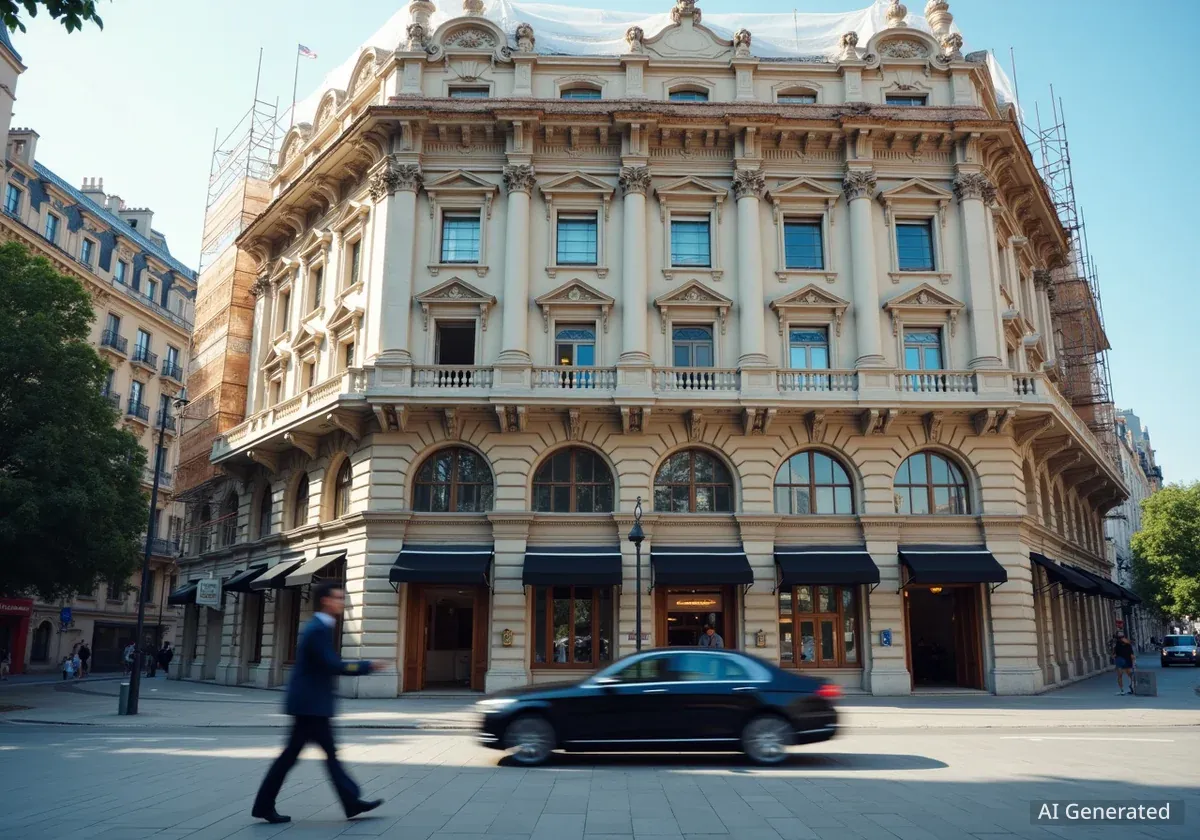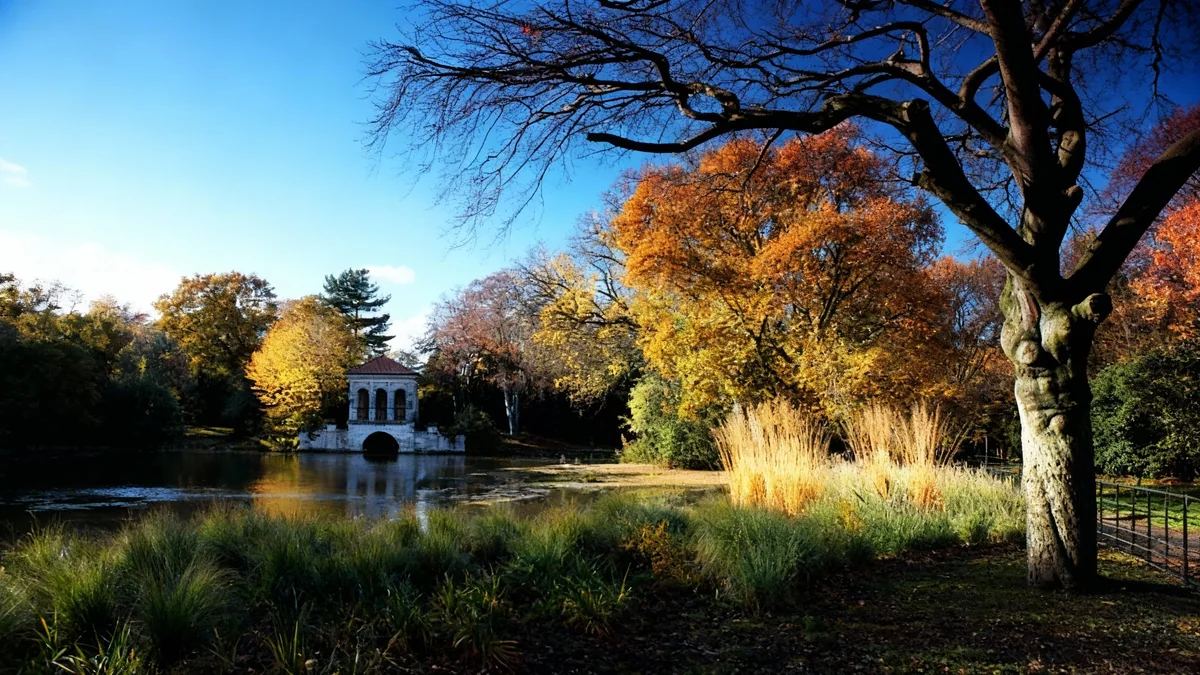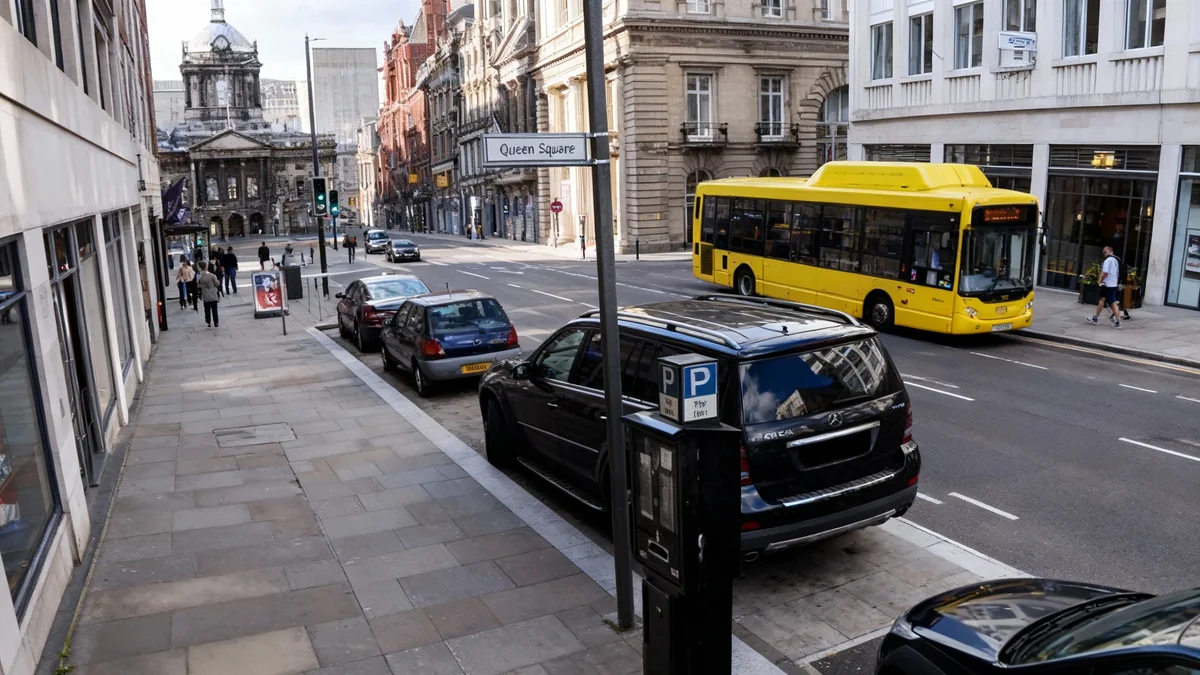Liverpool's iconic Martins Bank Building on Water Street is nearing the final stages of its transformation into a luxury 138-room hotel. The Grade II* listed landmark, which has been vacant for over a decade, is scheduled to open its doors to the public in late 2024, marking a new chapter in its distinguished history.
The multi-million-pound redevelopment project, led by property developer Kinset Group, will preserve the building's celebrated architectural features while introducing modern hospitality amenities. The hotel will be operated by the international hotel group Accor under one of its luxury brands, aiming to create a premier destination for tourists and local residents.
Key Takeaways
- The former Martins Bank headquarters on Water Street is being converted into a 138-room luxury hotel.
- The project is managed by developer Kinset Group and will be operated by Accor.
- Key heritage features, including the main banking hall and vaults, are being preserved.
- The hotel will feature multiple restaurants, bars, a luxury spa, and a grand ballroom.
- The reopening is scheduled for late 2024, creating new jobs and boosting local tourism.
A New Chapter for a Liverpool Landmark
The Martins Bank Building, an architectural gem in Liverpool's commercial district, is being carefully repurposed after sitting empty since 2009. This ambitious project aims to breathe new life into one of the city's most significant historic structures.
Developer Kinset Group has overseen the complex conversion, which balances the need for modern luxury with the responsibility of conserving a listed building. The hotel will offer a range of high-end accommodation, including 138 bedrooms and suites, designed to attract both international visitors and those seeking a premium local experience.
According to project leaders, the goal is to create more than just a hotel; it's about establishing a new social and cultural hub in the heart of the city. The building's vast, opulent spaces provide a unique canvas for this vision.
Operator and Brand Vision
Global hospitality leader Accor has been chosen to manage the hotel. While the specific brand is yet to be officially announced, it is expected to be one of Accor's top-tier luxury names. This partnership ensures the hotel will operate to international standards, further enhancing Liverpool's reputation as a world-class tourist destination.
The vision for the hotel is to blend the grandeur of the past with contemporary comfort and service, creating an experience that honours the building's legacy.
The History of Martins Bank Building
Constructed between 1927 and 1932, the Martins Bank Building was designed by architect Herbert James Rowse and served as the headquarters of Martins Bank. It is widely regarded as one of the finest examples of neo-classical architecture in England from the interwar period. The bank was later acquired by Barclays, which continued to operate from the site until its closure in 2009.
Preserving Architectural Heritage
A central challenge of the redevelopment has been the preservation of the building's irreplaceable historical features. Its Grade II* listing signifies its national importance, demanding a sensitive approach to any alterations.
The main banking hall, with its soaring ceilings, marble columns, and intricate details, will be transformed into the hotel's main restaurant and bar area. This allows the public to once again appreciate a space that was previously only accessible to bank customers.
Similarly, the original boardroom, featuring rich wood panelling and ornate plasterwork, is being restored to serve as a private dining or event space. Even the subterranean vaults, with their heavy steel doors, are being repurposed, potentially as unique private rooms or part of the spa facilities.
"Our commitment has always been to protect the unique character of this building. Every decision has been made with heritage in mind, ensuring that its history is not just preserved, but celebrated as part of the guest experience."
Inside the New Luxury Destination
Once complete, the hotel will offer a comprehensive suite of luxury amenities designed to establish it as a leading destination in the North West.
The facilities are planned to include:
- 138 Guest Rooms and Suites: Each designed with a blend of classic and contemporary styles.
- Destination Restaurant: Located in the former main banking hall, offering a grand dining experience.
- Multiple Bars: Including a rooftop bar with views over the city's waterfront and commercial district.
- Luxury Spa and Pool: A wellness area offering treatments, a swimming pool, and fitness facilities.
- Grand Ballroom: A large, opulent space suitable for weddings, conferences, and major events.
A Focus on High-End Experience
The hotel is being positioned to compete at the highest level of the hospitality market. From fine dining to bespoke wellness treatments, the aim is to provide an all-encompassing luxury experience. The inclusion of a rooftop bar is a significant addition, offering a new perspective on Liverpool's famous skyline.
Martins Bank Hotel By Numbers
- Opening Date: Late 2024
- Number of Rooms: 138
- Listed Status: Grade II*
- Original Architect: Herbert James Rowse
- Years Vacant: Over 15 (since 2009)
Economic Impact and Local Significance
The reopening of the Martins Bank Building is expected to have a significant positive impact on Liverpool's economy. The project has already supported numerous jobs in construction, restoration, and skilled craftsmanship throughout its development phase.
Once operational, the hotel will create hundreds of new, permanent jobs in the hospitality sector, ranging from management and front-of-house roles to culinary and wellness positions. This provides a welcome boost to local employment and offers new career opportunities within the city.
Furthermore, the hotel will enhance Liverpool's tourism offering, attracting high-spending visitors and providing much-needed five-star accommodation. Its location on Water Street, close to the Pier Head and other major attractions, makes it an ideal base for exploring the city. The project is seen as a key component in the ongoing regeneration of Liverpool's commercial district, encouraging further investment and activity in the area.





